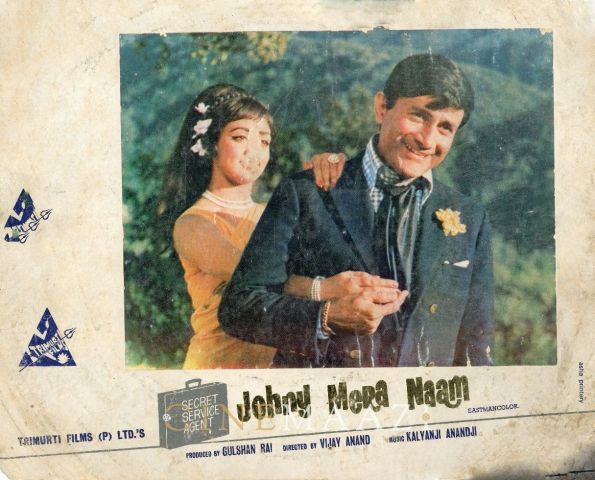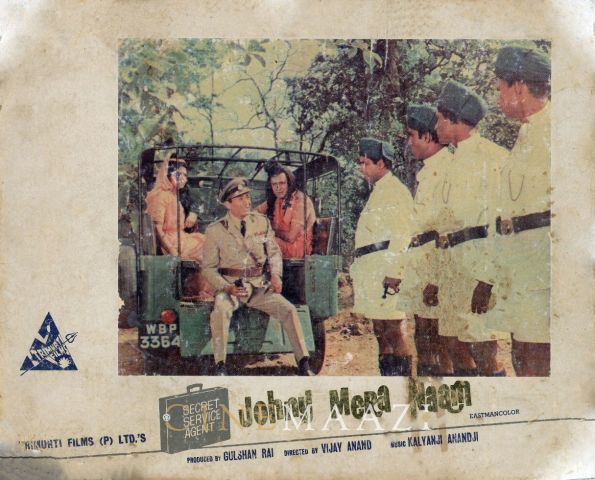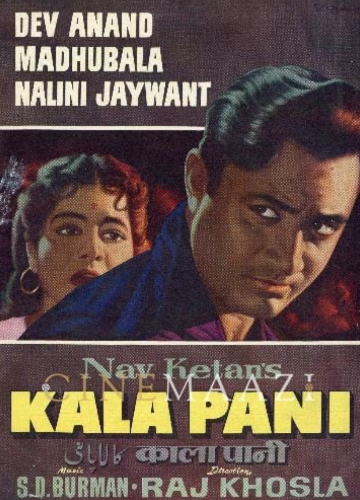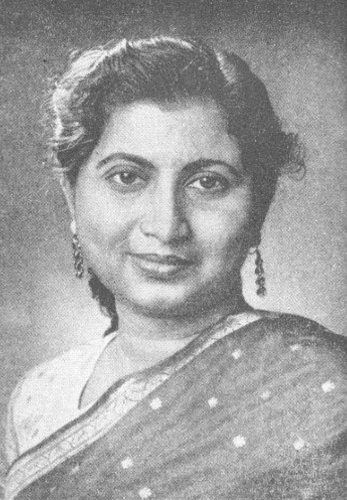Johny Mera Naam - Reworking the Formulaic in the Details
Subscribe to read full article
This section is for paid subscribers only. Our subscription is only $37/- for one full year.
You get unlimited access to all paid section and features on the website with this subscription.
Not ready for a full subscription?
You can access this article for $2, and have it saved to your account for one year.
Hindi popular cinema is often criticised for producing what may be construed as the same narrative over and over again, save for a few superficial rearrangements of plot elements that attempt to feign originality in an extremely homogeneous industry. But as with any industry that produces cultural artefacts in the narrative form, the Hindi popular film industry has a tried and tested repertoire built over several decades, in order to keep its audience coming back to fill the seats of film theatres across the subcontinent. And even in reproducing the same, apparently tired old tropes, the devil lies in the details, and a single trope can never be articulated the same way twice.
Johny Mera Naam, produced by Gulshan Rai in 1970, is a film that demonstrates this with great flourish. Written, directed, and edited by Vijay Anand, with a story by K.A. Narayan, Johny Mera Naam, begins with a hymn sung to the three deities purported to be the holy trinity of Hinduism, framing the logo of the distribution company, Trimurti Films. As the logo fades the title sequence begins, typed in a peculiar, saffron tinted font that makes the letters look like they're dripping off the screen. The accompanying music is, in accordance with the typography, wonderfully raucous; featuring a robust cacophony of horns and percussion, reminiscent of the soundtrack to a chase sequence, as the names of the cast and crew flash across the screen.
The bell rings, signalling the beginning of the final round and the two brothers, Mohan the elder, and Sohan the younger, spring into action egged on by the crowd and their father, while their mother winces and grimaces at their violent antics. After a lightning fast sequence of action shots, neither of the boys emerges a loser, the principal of the school announces that they both qualify as champions and the film cuts to the boys' home where their mother is praying to Shiva, as most pious women in Hindi films tend to do.
As their mother prays, the two boys play at cops and robbers, a foreshadowing of the least subtle, but most effective sort, for the events to come. The boys' mother finishes with her display of piety and chides the boys to stop with their violent games and get ready for dinner, but the boys are adamant to eat with their father, whom their mother sends them to fetch from a friend's home. And this is where the sequence of events begins to go awry.
The boys' father, a decorated inspector in the Mumbai police department, leaves his friend and colleague's house, only to be waylaid by an assassin who efficiently offs him, just in time for his sons to witness the event. And in witnessing it, the two boys react completely differently. Sohan, reacts in fear, calling for his father as he dies, while Mohan passionlessly pulls the knife from his father's back and trails after the killer as he makes an escape into the dead of the night.
The trope of the two brothers separated by time, space, and morality, has been a main stay of not only Hindi popular cinema, but melodramatic modes of narrative articulation for many a decade, it would be reiterated again, for years to come, notably in 1975's Deewaar, under vastly different circumstances. Johny Mera Naam, however, is quite unique, in that it preserves the intrigue of the lost brother's identity at the level of the narrative, but leaves massive clues to the identity of the lost brother in its visual design, prominently in the many action sequences that pepper the film.

Playing the role of the primary female protagonist is Hema Malini, as Rekha, an accomplished thief and smuggler, and a woman in search of her lost father, whose motives are divulged gradually through the film's narrative and romantic entanglement with Sohan, who operates under the guise of a petty thief who introduces himself quoting the film's title "Johny mera naam". Sohan's first encounter with the smuggling ring takes place in a holding cell which houses Hiralal (Omkar Nath Dhar, credited by his stage name, Jeevan), whom he promises to do a small job for in order to ingratiate himself into the cartel's operations. It is in doing this first job that Sohan/Johny meets Rekha, and falls in love with her almost immediately, as is expected in a film as formulaic as Johny Mera Naam.

In fact, Johar's role accounts for a number of the film's most reflexive moments. After the protagonists land in Kathmandu, at a casino which serves as one of the cartel's base of operations and a site for a rendezvous, Deeja Ram wins a game of roulette and in his euphoria attempts to kiss the young white woman next to him, only to be interrupted by a jump cut. In response to this rude interruption, Dooja Ram turns to an old man next to him and asks if this is the work of the censor board. This almost throw away sequence refers to the unwritten ban on kissing in Indian cinema that operated well into the 1980s, but complicates it significantly. Kissing was only banned between Indian couples as it did not reflect "Indian culture", but not foreign ones. Dooja Ram attempts to kiss a white woman, but is interrupted any way - a humorous and caustic dig at the limits of censorship in cinema.
In terms of visual design, Johny Mera Naam seems to represent the classical kitsch emblematic of the Hindi cinema of its time. And while it may look like very little care has been taken in devising the way the film looks, on closer inspection, the film reveals itself to be quite reticent of the colours and coding of its characters, making it quite a treat for the attentive viewer, leaving an ample number of clues for the resolution of the film's plot. This is especially striking in the film's climactic sequence in the colour coding of the protagonists' and antagonists' costumes.
Tags
About the Author

Sneha Dasgupta is an M.Phil student at the Centre for Studies in Social Sciences, Calcutta. With a background in Film Studies, Mass Communication and Videography, she splits her time between studying snuff film and worrying that words don't mean the same thing in different historical epochs.







.jpg)


